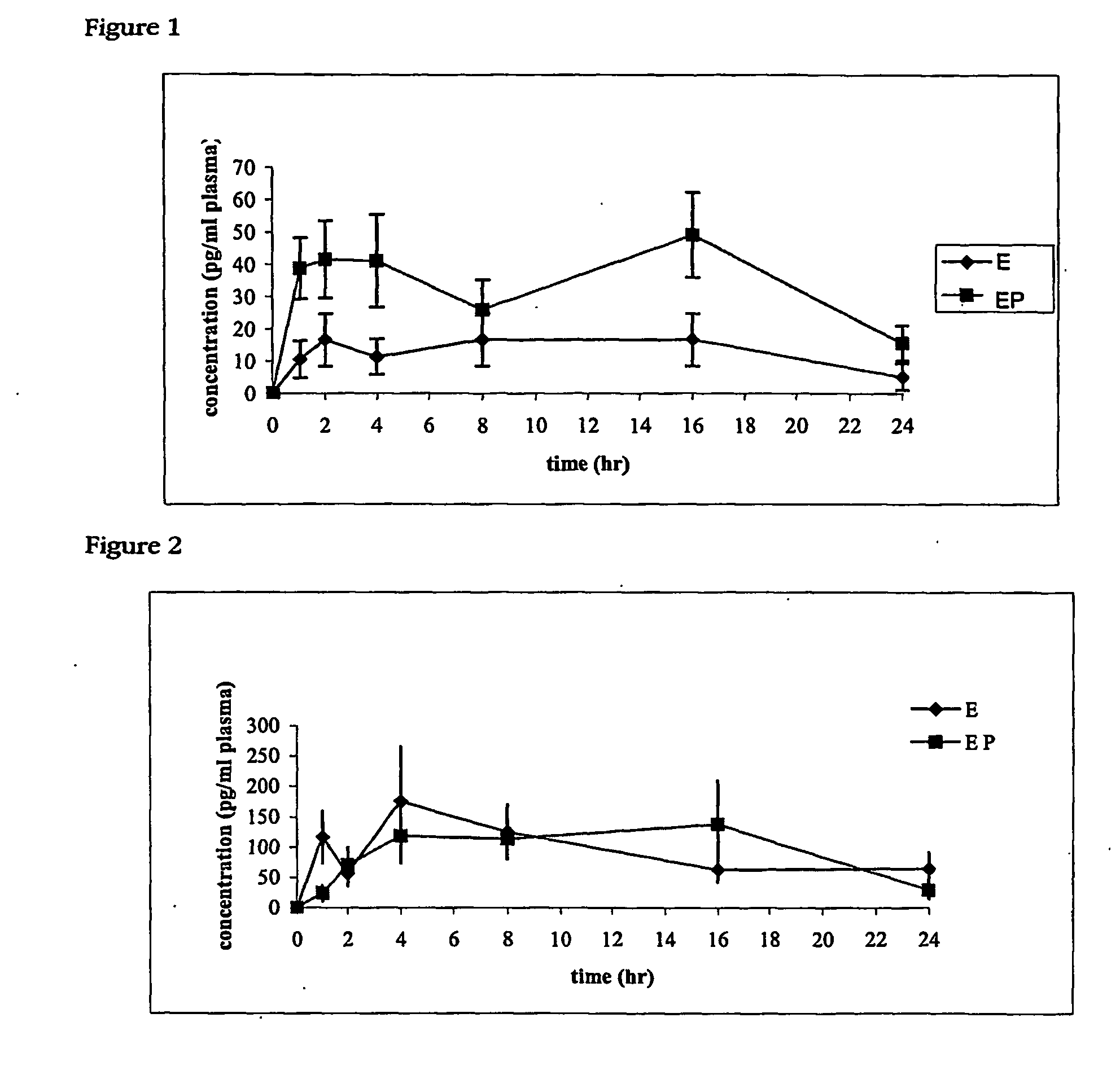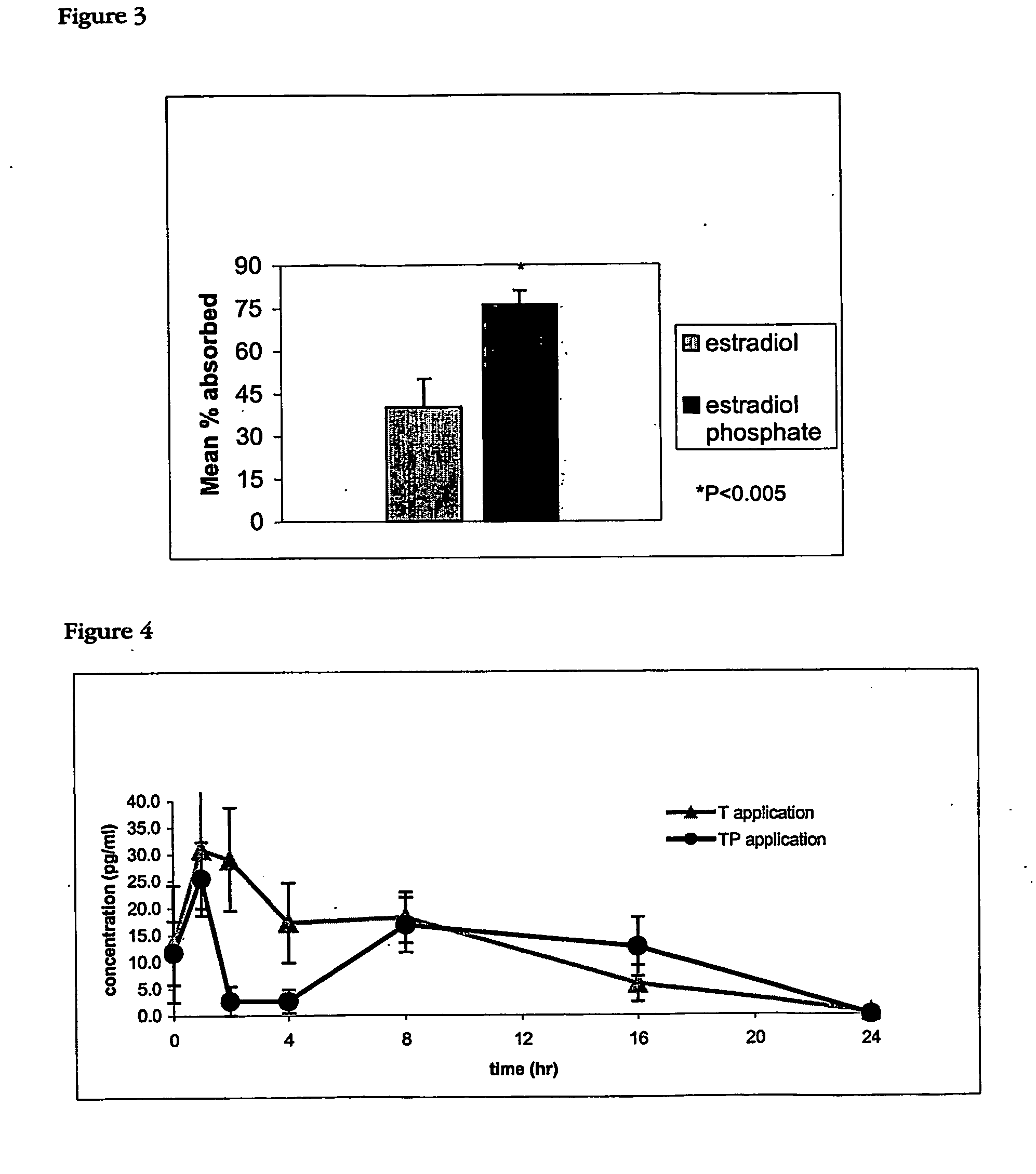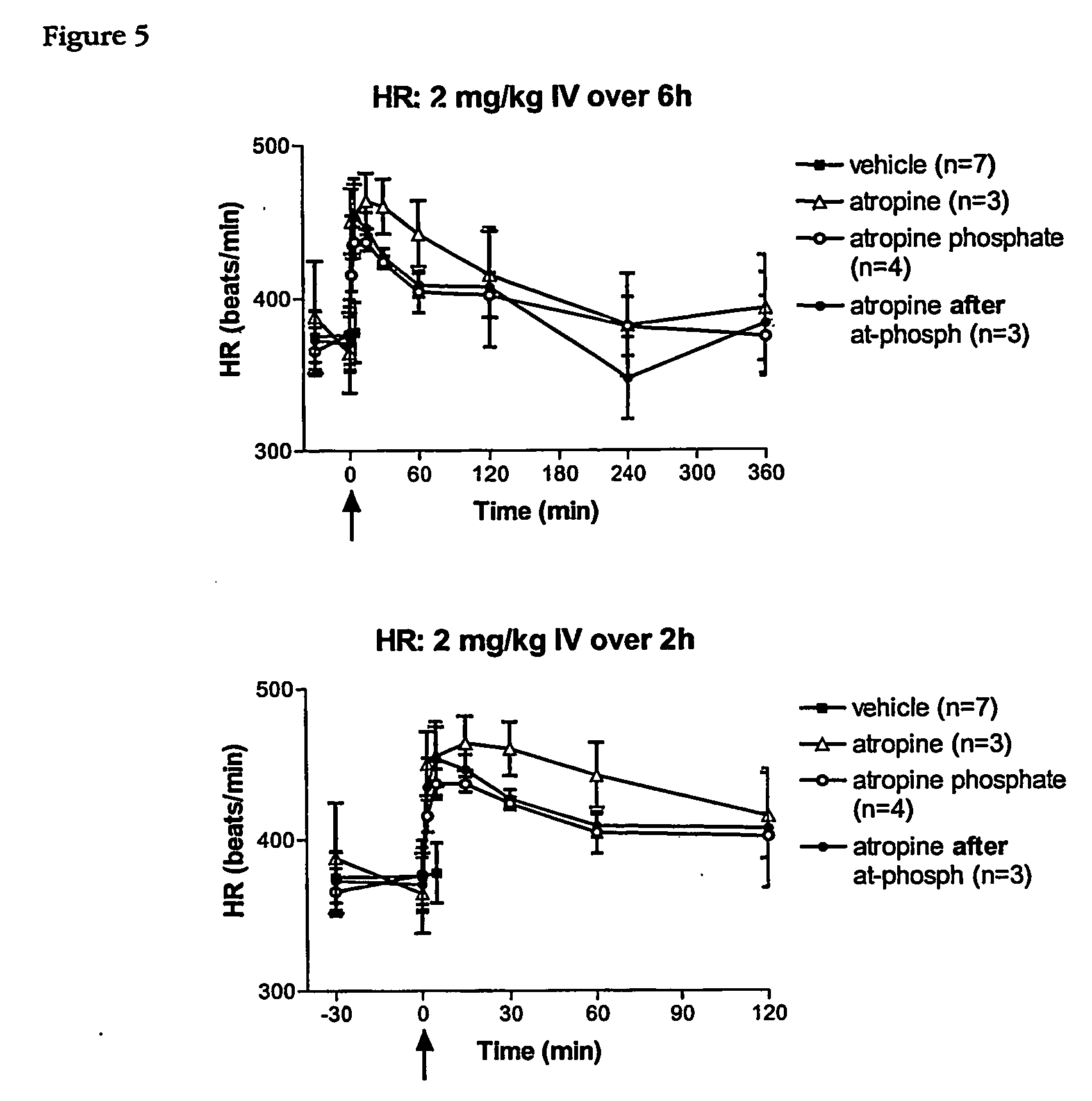Carrier
a carrier and carrier technology, applied in the field of carriers, can solve the problems of drug delivery fluctuations, suboptimal bioactivity of pharmaceuticals, and difficulty in creating systems that are reproducible, and achieve the effect of rapid and efficient transportation of pharmaceuticals
- Summary
- Abstract
- Description
- Claims
- Application Information
AI Technical Summary
Benefits of technology
Problems solved by technology
Method used
Image
Examples
example 1
[0057] A carrier cream according to the invention was prepared as follows:
W / WPHASE ADeionized water61.95%Glycerin5.00Trisodium EDTA0.05Carbomer (Carbopol Ultrez 10)20.50laurylaminodipropionic acid tocopheryl phosphate17.50PHASE BCetearyl Alcohol (and) Ceteareth-20 (Phoenoxol T)32.00Glyceryl Stearate (Emerest 2400)41.00Isopropyl Myristate (Pelemol IPM)35.00Cetyl Ethylhexanoate (Pelemol 168)33.50Isocetyl Behenate (Pelemol ICB)33.50Oleyl Erucate (Cetiol J-600)43.00Dimethicone (Dow 200,100 cSt.)50.50PHASE CDeionized Water5.00Triethanolamine (99%)0.50PHASE DPropylene Glycol (and) Diazolidinyl Urea (and)1.00Methylparaben (and) Propylparaben (Germaben II)6
1Vital Health Sciences Pty Ltd
2B. F. Goodrich, Incorporated
3Phoenix Chemical, Incorporated
4Cognis, Incorporated
5Dow-Corning, Incorporated
6ISP Corporation
Procedure:
[0058] Procedure: Combine Phase A items minus the Carbomer and laurylaminodipropionic acid tocopheryl phosphate with stirring. When a solution is obtained, disperse Ca...
example 2
[0059] The transdermal delivery of estradiol and estradiol 3:phosphate in the hairless rat model was evaluated in this example.
Methods
[0060] Animals: 23 female albino hairless rats were ovariectomised under isoflurane-induced anaesthesia and allowed to recover for 10 days prior to experimentation. This should allow clearance of any estrogens from the body.
[0061] Blood sampling: Blood samples (500 μl) were obtained from the tail vein of conscious restrained rats at 0, 1, 2, 4, 8, 16 and 24 hours following application of both the estradiol (n=5) and estradiol phosphate (n=6) formulations. Blood was collected into EDTA tubes, then centrifuged at 5000 rpm for 10 minutes. Plasma was removed and stored at −80° C. until assayed.
[0062] Transdermal Formulation Preparation and Application: estradiol and estradiol phosphate were provided by Vital Health Sciences Pty Ltd and prepared at concentrations of 20 μg / ml approximately 1 hour before application in the carrier cream from Example 1. ...
example 3
[0079] The acute transdermal penetration of 3H-Estradiol (3H-E) and 3H-Estradiol Phosphate (3H-EP) in the hairless rat model was evaluated in this example.
Methods
[0080] Animals: 6 female albino hairless rats were used in this study (n=3 per treatment group).
[0081] Transdermal Formulation Preparation and Application: 3H-E and 3H-EP were provided by Vital Health Sciences Pty Ltd and prepared in formula approximately 1 hour before application in in the carrier cream from Example 1.
[0082] 20 μl of 3H-E and 3H-EP were aliquoted into 1 ml Eppendorf tubes. The solvents from both 3H-E and 3H-EP were evaporated under a stream of nitrogen. Once completely dry 0.498 g of the carrier cream of example 1 was added to 3H-E and 0.502 g to 3H-EP and mixed with a glass rod and centrifuged for 1 minute. This was repeated 5 times.
[0083] Each formulation was applied to the dorsal skin of an anaesthetised rat in an area of approximately 4 cm2 marked with an indelible felt tip marker. Application of...
PUM
| Property | Measurement | Unit |
|---|---|---|
| partition coefficient | aaaaa | aaaaa |
| lipophilic | aaaaa | aaaaa |
| total weight | aaaaa | aaaaa |
Abstract
Description
Claims
Application Information
 Login to View More
Login to View More - R&D
- Intellectual Property
- Life Sciences
- Materials
- Tech Scout
- Unparalleled Data Quality
- Higher Quality Content
- 60% Fewer Hallucinations
Browse by: Latest US Patents, China's latest patents, Technical Efficacy Thesaurus, Application Domain, Technology Topic, Popular Technical Reports.
© 2025 PatSnap. All rights reserved.Legal|Privacy policy|Modern Slavery Act Transparency Statement|Sitemap|About US| Contact US: help@patsnap.com



